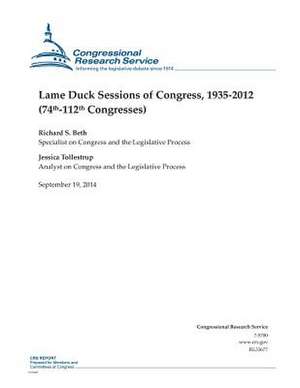Lame Duck Sessions of Congress, 1935-2012 (74th-112th Congresses)
Autor Richard S. Beth, Jessica Tollestrup, Congressional Research Serviceen Limba Engleză Paperback
Preț: 123.02 lei
Nou
Puncte Express: 185
Preț estimativ în valută:
23.55€ • 25.59$ • 19.79£
23.55€ • 25.59$ • 19.79£
Carte disponibilă
Livrare economică 31 martie-14 aprilie
Preluare comenzi: 021 569.72.76
Specificații
ISBN-13: 9781502507990
ISBN-10: 1502507994
Pagini: 34
Dimensiuni: 216 x 279 x 2 mm
Greutate: 0.1 kg
Editura: CREATESPACE
ISBN-10: 1502507994
Pagini: 34
Dimensiuni: 216 x 279 x 2 mm
Greutate: 0.1 kg
Editura: CREATESPACE
